High school was about 20 years ago for me (yikes!), and yet I can still remember some of the lectures given by a few exceptional teachers. There’s something about a great teacher who can bring a subject to life—something that can shape a student’s mind for a lifetime.
I imagine if I had Compass Classroom’s Dave Raymond as one of my teachers in high school, I would be saying the same about him.
Our family loves everything Compass Classroom puts out. From Latin to Economics, from biblical parables to tips for homeschoolers, they’ve got a lot to offer. This is why I was eager to check out Dave Raymond’s new course, Modernity.
Compass Classroom asked me if I would write a review of the course, so I’ve been pouring over his video lectures for the last couple weeks.
In a word, this course is stellar.
I was compensated for this review, but I never write endorsements for products I don’t personally love.
What is Modernity?
Often, historians divide European history into three broad epochs: antiquity, medieval, and modern. “Modernity” is a term used for the modern era (15th century to the present). It is also a term that describes the cultures, governments, philosophies, and practices that arose in the West in that era.
This is what Dave Raymond’s Modernity course is all about. It is a full-school-year video course giving students an in-depth look at the modern era in western culture.
What Does Modernity Cover?
Modernity has 27 lectures (5 videos for each lecture), totaling 50 hours of material in all. On average, student watch about 20 minutes of lecture every day, 5 days a week.
Starting with the foundations of modern European history and moving students up to the present, the course covers a wide variety of topics:
- Intellectual movements (the Enlightenment, the Scientific Revolution, Nationalism, Darwinism)
- Significant events (world exploration and colonization, the French Revolution, the Thirty Years War, the Great Depression, WWI, WWII, the Cold War, the fall of communism)
- Important cultural developments (the Industrial Revolution, Victorianism, the Roaring 20s, the invention of the television)
- Great political and military leaders (Napoleon, Wilberforce, Churchill, FDR, Hitler, Kennedy, Reagan, Thatcher)
- Great musicians, authors, and artists (Bach, Vermeer, Austen, the Romantic poets, Tolkein)
- Great philosophers and thinkers (Descartes, Spinoza, Hobbes, Locke, Voltaire)
- Great theologians and religious thinkers (Pascal, Comenius, Carey, Kuper, Chalmers, Chesterton, Bonhoeffer, Spurgeon, C.S. Lewis, Pope John Paul II)
The course covers the same time period as Dave Raymond’s American History, but it more specifically focuses on what was happening in Europe at that time.
7 Things I Love About Modernity
Watching these videos makes me very excited for my boys to take this course. Here are 7 reasons why…
1. Modernity offers a ruthlessly Christian approach to history.
This course is not merely a regurgitation of facts, events, dates, and people. It seeks to interpret the history through a Christian lens.
In every lesson, Dave is helping to shape a student’s worldview with Scripture. He does this by (1) showing the providence of God in history, (2) explaining many of the biblical foundations that shaped western civilization, and (3) critiquing unbiblical attitudes that arise in historical movements.
Dave’s approach to learning history is deeply rooted in his rich biblical understanding of humanity, our divine purpose and calling as people, and the purpose of pursuing wisdom. His method of teaching also communicates incredible hope—even when studying a time period that is often very dark—because he believes in a God who transcends and works through history.
2. Dave Raymond knows his stuff.
Dave is an excellent teacher and clearly has a grasp of the important elements that need to be covered in a course of this kind. For 12 years he has taught humanities courses such as history, literature, composition, Latin, civics, and economics for both homeschoolers and in private schools, and his expertise shows in these video lessons.
3. Dave Raymond is an excellent storyteller.
“History must be taught as stories.” – Ben House, Veritas Academy
There’s nothing “flashy” about these videos. While the production quality is very high (like everything Compass Classroom creates), most of the time it is Dave on the screen lecturing, interspersed with a few primary source images like historical paintings or photos. It isn’t produced like a riveting docudrama.
Still, Dave has a knack for bringing the past to life. He demonstrates how simple storytelling can not only educate but can hold our attention and make us fall in love with the study of history.
4. Modernity gives students an appreciation for, and a valuable critique of, the West.
When we think of “the West” we might be thinking in geographical terms: the United States and Europe. And while that is often what is meant by the term, Modernity speaks of the West in much broader terms—not just a place but a mentality.
In what we call “the West,” the Bible was a centrally important book. The Bible brought its view of God, the universe, and mankind into all the leading languages of western civilization, which means the Bible actually shaped the mental categories in which Western people think. Students who take this course will be immediately impressed with a sense of gratitude for how the Bible has shaped the western world.
At the same time, Dave doesn’t paint a rosy picture of the West, as if “westernness” can do no wrong. He doesn’t shy away from the fact that the modern era is a dark time, filled with revolution and violence that is unparalleled in human history.
5. Modernity teaches through primary source readings.
Dave doesn’t simply ask students to engage with his lectures. He wants them to experience the minds of the past for themselves. The course offers a 400-page reader filled with primary source readings that are paired with each lecture.
6. Modernity’s projects are fun and engaging.
Throughout the course of the year, students are expected to complete four projects, allowing students to dive deeply into the historical material.
- Students are expected to do a Reformational imitation project. For this project, students imitate and reproduce a work from a 17th or 18th century master, such as copying a work of a master artist, copying a composer, copying a great poet, or reconstructing a famous invention from the time period.
- Students are required to deliver a speech to a local audience about the value and necessity of tradition in the modern world.
- Students are expected to research and write a thesis paper, demonstrating knowledge of a chosen topic and an opinion or argument about the topic (3-10 pages in length, based upon grade level and ability).
- Students are required to do a project in a medium of their choice that takes 30-40 hours total to complete. This can be anything from creating artwork to writing a play to composing an essay to delivering a sermon, demonstrating a student’s craftsmanship, ingenuity, appropriateness to the history of Modernity, and work ethic.
7. Modernity is easy for parents and students to use in the home.
Just sit back and let Dave be the expert! When you purchase the course, you get a thorough Teacher Guide, complete with an explanation of all projects, a grading guide, and exam answer keys.
It is very easy for a student to pace him or herself through the course: just watch the video, complete the readings, take the quiz, keep up on your portfolio and projects.

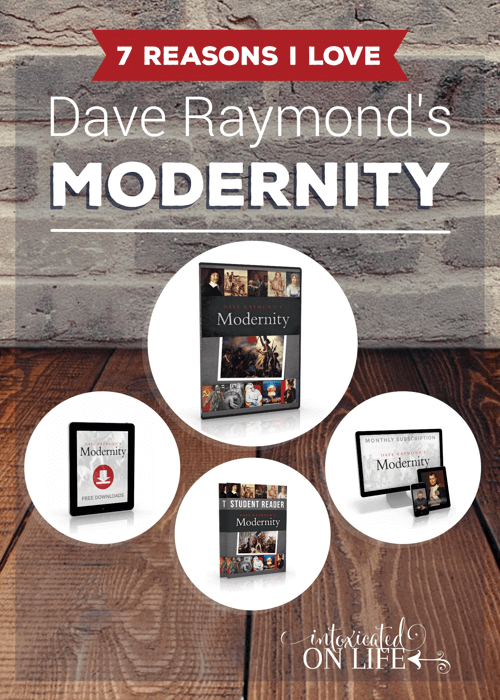
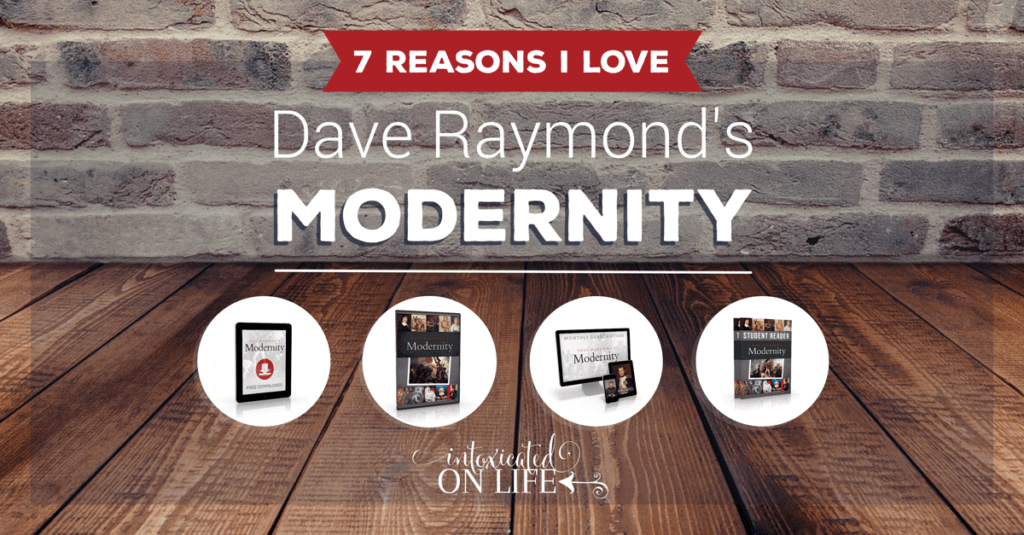
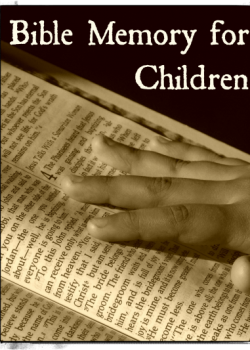
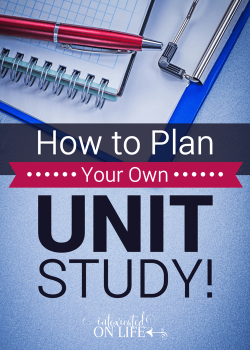


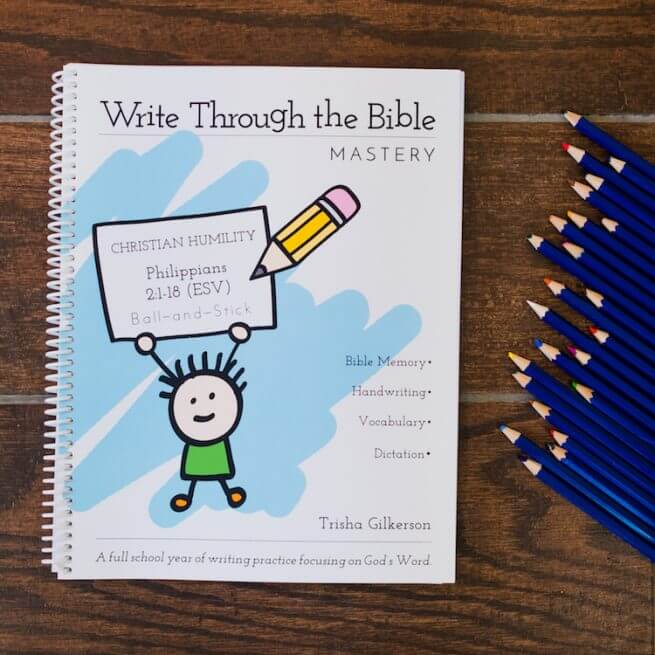
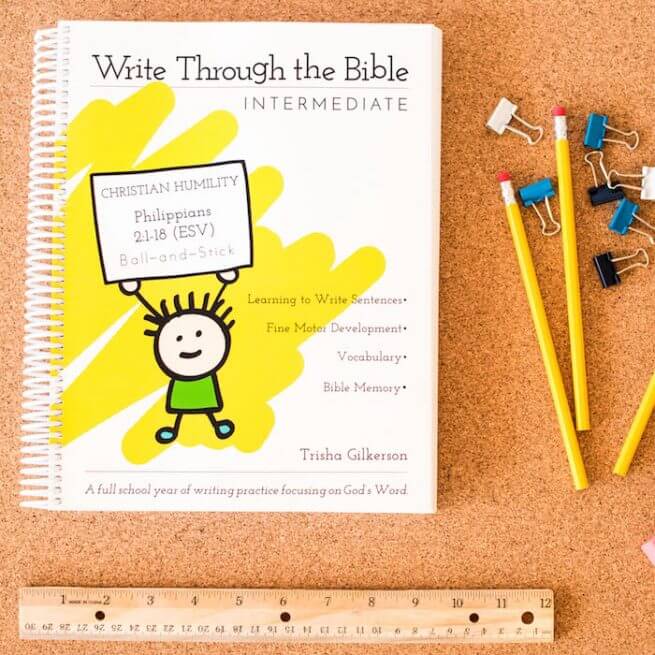
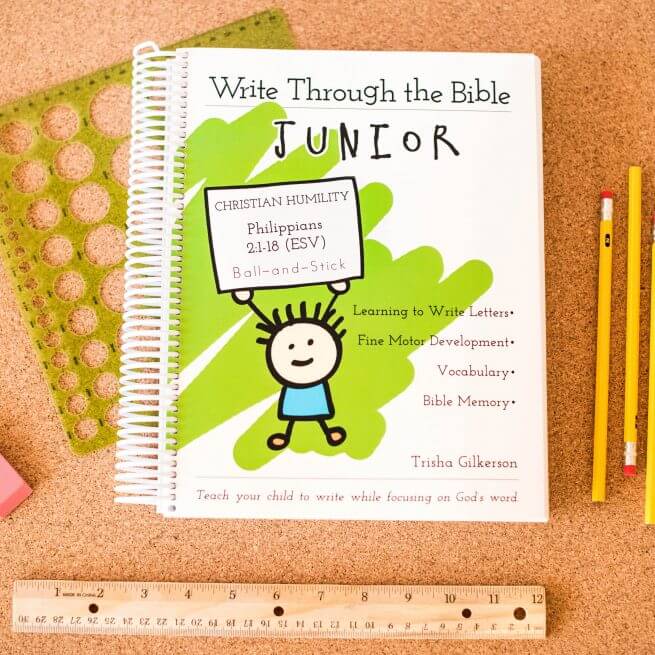
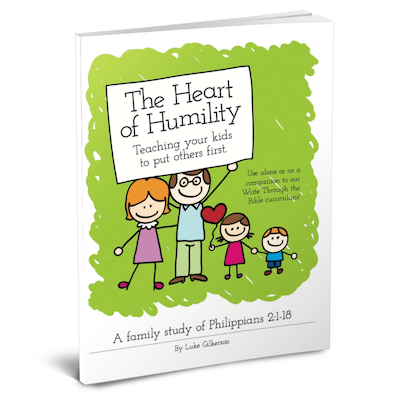

This is an excellent review! We have enjoyed Raymond’s American History and Visual Latin, too.
We love all the stuff Compass Classroom does.
Thanks for the review! How much time per day, on average do you think it would take a student- including writing and everything?
Unfortunately that’s tough to say. Even the videos themselves are all different lengths from day to day (I would say there’s about 20 minutes of lecture every day, on average). The first 3 projects will take anywhere from 10 to 30 hours to complete each, depending on how fast your student writes and reads. The final project is designed to take from 30 to 40 hours total. So, I would say all of those projects will probably take 4-5 hours every week. The primary source readings will probably take 30 minutes a day, depending on how fast your student reads. Hope these estimates are helpful.
Would you consider this course as fulfilling a high school world history credit?
Yes. For sure.